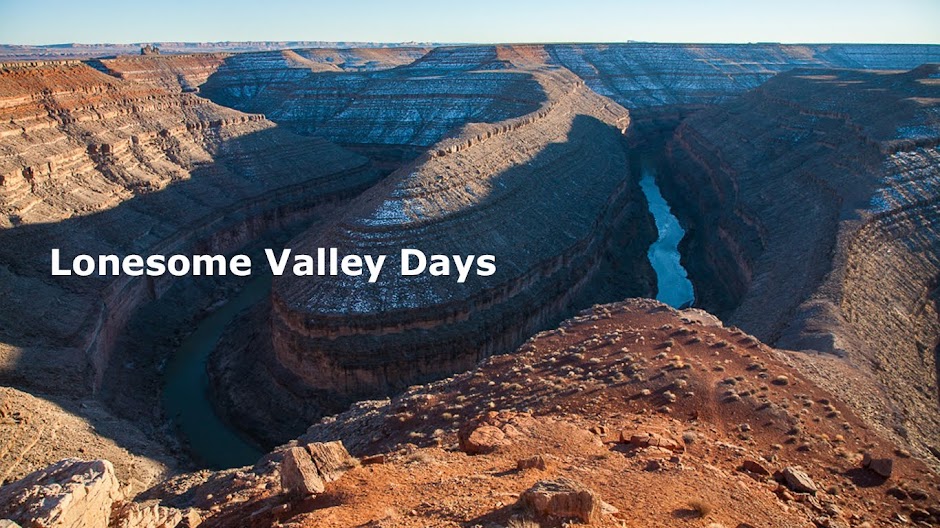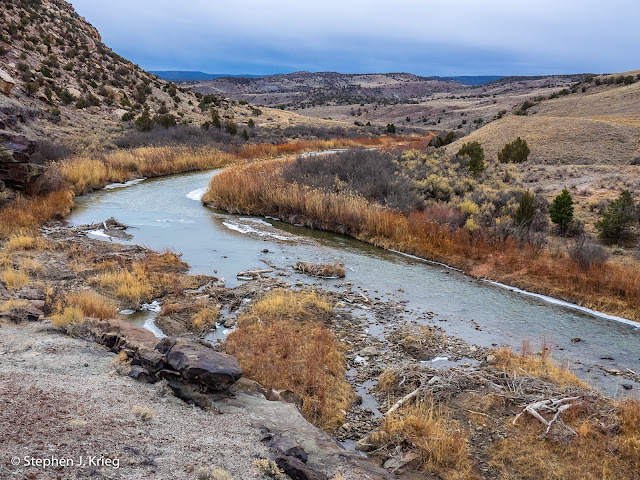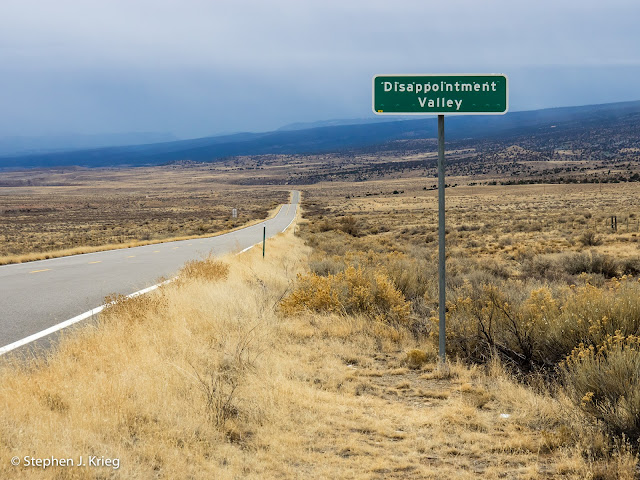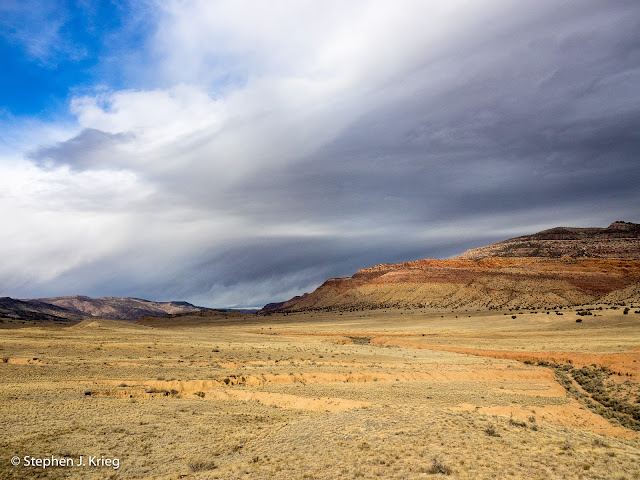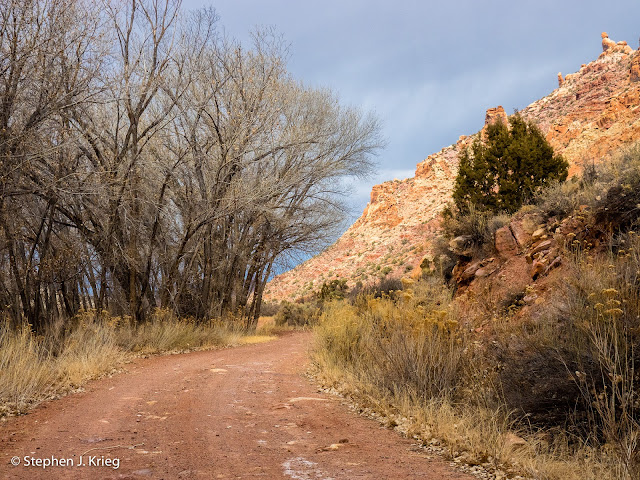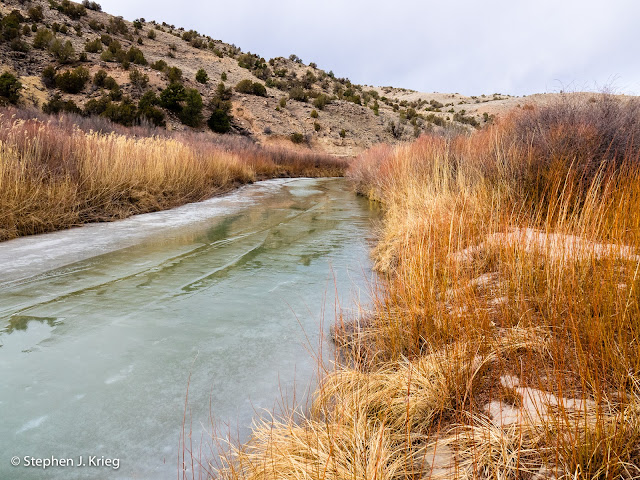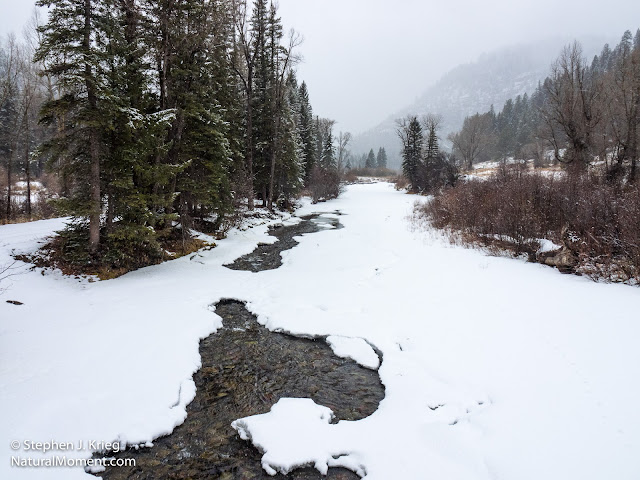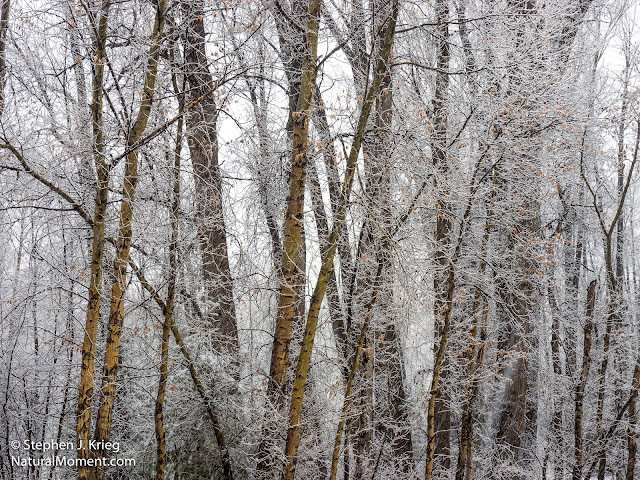 |
| The Paradox Valley in April, from above the hamlet of Paradox, Colorado. |
The residents call themselves "West Enders" and "Rimrockers". Both terms seem to have a double meaning. Because the early days of this end of the county were wild, as in civilized folks in the valleys trying to bring to justice sometimes lawless characters living (and sometimes hiding) in the hills and "rim rocks" of the surrounding mesas.
 |
| Highway 90 south of Bedrock. The La Sal Mountains (in Utah) are on the skyline. |
In Bedrock, the Bedrock Store still stands. When I first visited here several years ago, it was still open for business. Then it was closed for a few years while the owner dealt with health issues. And happily recovered. But sold the store, whose new owners are dedicated to carrying on the legacy.
 |
| The Bedrock Store, Bedrock, Colorado. |
"Bedrock and Paradox" was the title of the final chapter of Edward Abbey's Desert Solitaire: A Season In The Wilderness. But the chapter was neither about the towns of Bedrock nor Paradox. So why did he call it that? He certainly knew all about this area.
 |
| Looking across Paradox Valley at Bedrock, where the Dolores River cuts through the cliffs on its way to the Colorado River. The far side of the geologic "paradox". |
When I return will it be the same? Will I be the same? Will anything ever be quite the same again? If I return.
My guess is that he named the chapter Bedrock And Paradox because it sounded cool. Writers and songwriters make a living that way. He had come to feel grounded on the rock layers of the Colorado Plateau, and contradictory about whether to go or to stay. That the two hamlets of Bedrock and Paradox are only six miles apart at the upper end of the Paradox Valley, just on the east side of the La Sal Mountains in southeast Utah, made for a nice pairing, a hidden tribute to those living in or loving the area.
 |
| Sunset glow on the cliffs near Bedrock, Colorado. |
Photo location: Montrose County, Colorado.
See more of my photography on my website: www.NaturalMoment.com.
© Copyright 2018 Stephen J. Krieg
